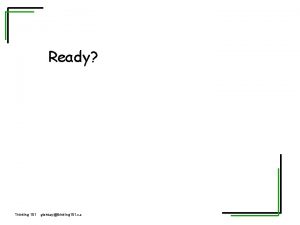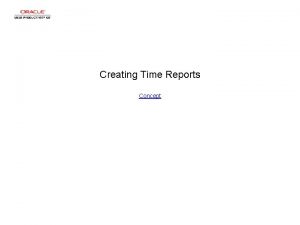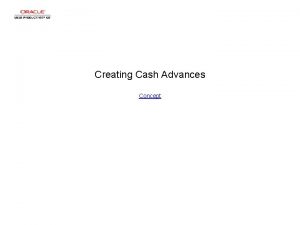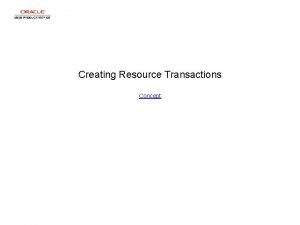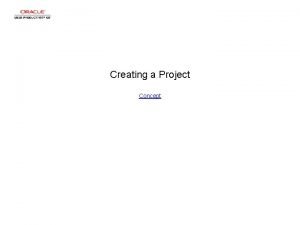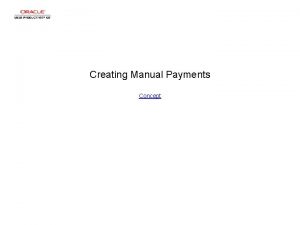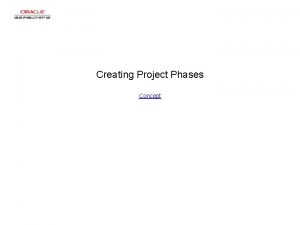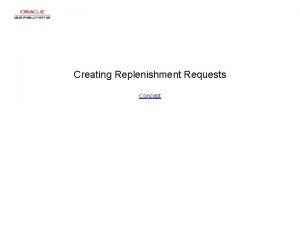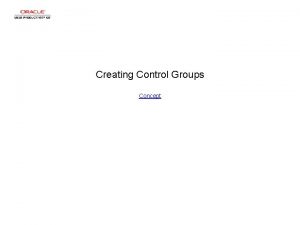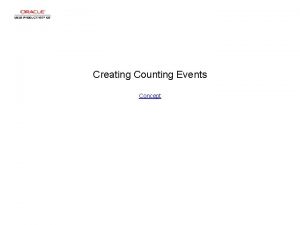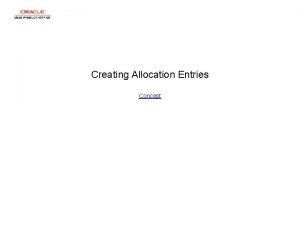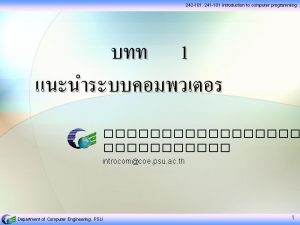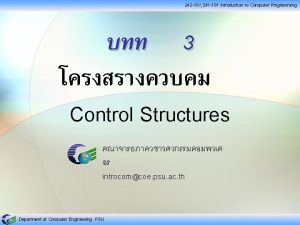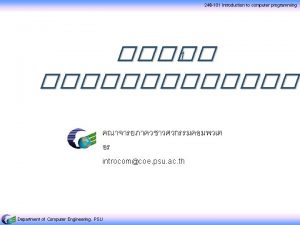CS 101 Programming Programming Programming is creating the
















- Slides: 16

CS 101 Programming

Programming • Programming is creating the instructions the computer will follow to accomplish a task. – Augusta Ada King, Countess of Lovelace (10 December 1815 – 27 November 1852)

Congratulations, you are a programmer!

How do we write instructions for non computer tasks? • We usually use normal human language in a step by step manner. For example: – – –. 1 Turn to your left 2 Take 5 steps 3 Go to whiteboard 4 Pick up pen 5 Write President’s name on board Etc.

What type of instructions do computers need? • Very detailed and in binary (also called Machine Language) 00000100000110100001100111000111000000111010101010000101100111110110001011011100100 0000101001010001011100101000010101111101000000111 110101010110000110010110011100000011101 0101011101010101000010110011111011000101101110 0100000010100101000101110010100001010111110100000 011111010101011000011001011001110000001 110101010101010100001011001111101100010110 1110010000001010010100010111001010000101011111010 000001111101010101100001100101100111000 0001110101010101010000101100111110110001 0110111001000000101001010001011100101000010101111 101000000111110101010110000110010110011100011 1000000111010101010101000010110011111011 0001011011100100000010100101000101110010100001010 11111010000001111101010

Program Languages are for humans! 1. We create instructions using a programming language. For example the below Python code for altering the color of a picture : – – – – def make. Sunset 2(picture): reduce. Green 30 Percent(picture) reduce. Blue 30 Percent(picture) – – def reduce. Blue 30 Percent(picture): for p in get. Pixels(picture): value = get. Blue(p) set. Blue(p, value*0. 7) def reduce. Green 30 Percent(picture): for p in get. Pixels(picture): value = get. Green(p) set. Green(p, value*0. 7) 2. > then> Another program (compiler or interpreter) turns the Python code into the binary code the computer can run: 10101100001100101100111000111 000000111010101010101 00001011001111101100010110111001 0000001010010100010111001 01000010101111101000000111110101011000011001011001110001 11000000111010101010101 01000010110011111011000101101110 0100000010100101000101110 010100001010111110100000011111010110000110010110011100000011101010101010000101100111110110001011011 1001000000101001010001011 10010100001010111110100000011111010100100

To hard to write binary instructions so instead we use programming languages • John Backus created the first programming language, FORTRAN, at IBM in 1957 • Programmers write instructions for computers using a programming language. • After we write the instructions in a program language another program then turns the instructions into the machine language the computers needs. Admiral Grace Hopper

Many Types of Program Languages • Low Level Languages – Machine Languages (1 GL) – Assembly Languages (2 GL) • High Level Languages – Procedural Languages (3 GL) – Task Oriented Languages (4 GL) – Problem Constraint Languages (5 GL) • (Someday) Natural Languages • “Star Trek”

“Hello World” Program Written In A 1 st Generation Machine Language 1010110000110010110011100000011101011101 010101010000101100111110110001011011100100000 0101001010001011100101000010101111101000000111 110101010110000110010110011100000011 101011101010101000010110011111011000101 1011100100000010100101000101110010100001010111 1101000000111110101010110000110010110011100000011101010101010100001011001 1111011000101101110010000001010010100010111001 01000010101111101000000111110101010110000110100001 100101100111000000111010101010101000010110011111011000101101110010000001010010100 0101110010100001010111110100000011111010101011 000011010000110011100011100000011101010101

“Hello World” Program Written In A 2 nd Generation Assembly Language. HW: stringz "Hello World". text. align 16. global main#. proc main# main: . prologue 14, 32. save ar. pfs, r 33 alloc r 33 = ar. pfs, 0, 4, 1, 0. vframe r 34 mov r 34 = r 12 adds r 12 = -16, r 12 mov r 35 = r 1. save rp, r 32 mov r 32 = b 0. body addl r 14 = @ltoffx(. HW), r 1 ; ; ld 8. mov r 14 = [r 14], . HW ; ; st 8 [r 34] = r 14 ld 8 r 36 = [r 34] br. call. sptk. many b 0 = puts# mov r 1 = r 35 ; ;

“Hello World” Program Written In The 3 rd Generation Language C++ // Hello World in C++ (pre-ISO) #include <iostream. h> main() { cout << "Hello World!" << endl; return 0; }

“Hello World” Program Written In The 4 th Generation Language Python print("Hello World")

Someday “Star Trek” https: //www. youtube. com/watch? v=5 Lgw. AD-Iio. Y

Hello World In Other Program Languages • http: //helloworldcollection. de

Nice Intro to Programing Dataquest code. org is a nice way to get an introduction to programming

How to create a program • 1 Program Specification – Define the problem • 2 Program Design – Create an algorithm • Can use: – – – Top-Down Design OOP (Object Oriented Design) Logic Structures Flow Charts Etc. • Create Pseudocode • • 3 Program Code 4 Program Test 5 Program Documentation 6 Program Maintenance
 Hổ đẻ mỗi lứa mấy con
Hổ đẻ mỗi lứa mấy con Thế nào là hệ số cao nhất
Thế nào là hệ số cao nhất Diễn thế sinh thái là
Diễn thế sinh thái là đại từ thay thế
đại từ thay thế Vẽ hình chiếu vuông góc của vật thể sau
Vẽ hình chiếu vuông góc của vật thể sau Thế nào là mạng điện lắp đặt kiểu nổi
Thế nào là mạng điện lắp đặt kiểu nổi Cách giải mật thư tọa độ
Cách giải mật thư tọa độ Lời thề hippocrates
Lời thề hippocrates Vẽ hình chiếu đứng bằng cạnh của vật thể
Vẽ hình chiếu đứng bằng cạnh của vật thể Thang điểm glasgow
Thang điểm glasgow Quá trình desamine hóa có thể tạo ra
Quá trình desamine hóa có thể tạo ra Khi nào hổ mẹ dạy hổ con săn mồi
Khi nào hổ mẹ dạy hổ con săn mồi Các châu lục và đại dương trên thế giới
Các châu lục và đại dương trên thế giới Dot
Dot điện thế nghỉ
điện thế nghỉ Bổ thể
Bổ thể

















